Images of a 'Rebel' Coelacanth
Rebellatrix
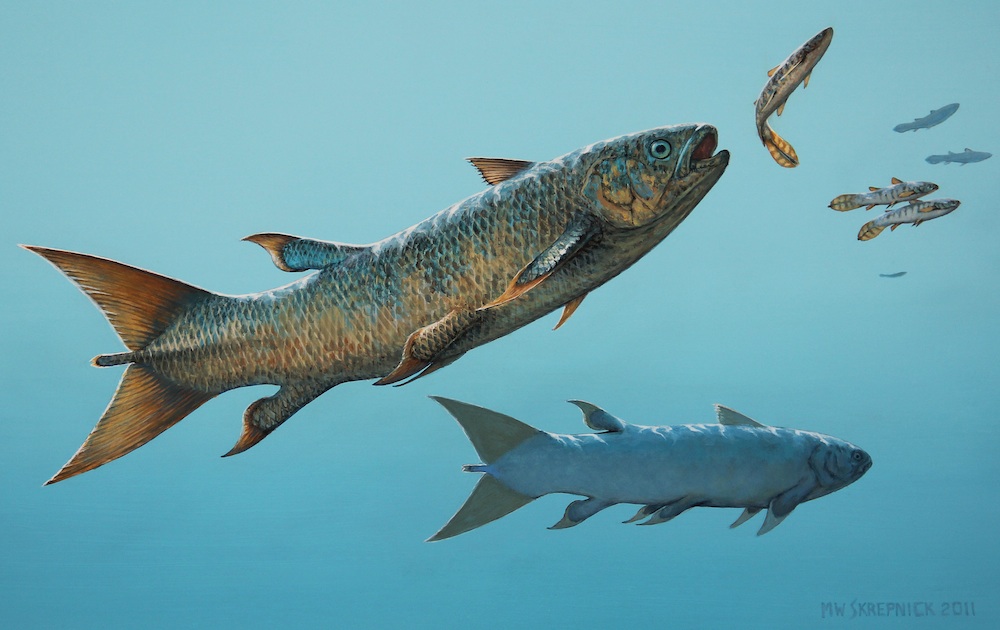
A coelacanth species discovered in British Columbia is the only known version of this ancient fish to boast a forked tail. The fast-swimming coelacanth Rebellatrix chasing smaller species of fishes in the Early Triassic ocean west of Pangaea.
Coelacanth Skeleton
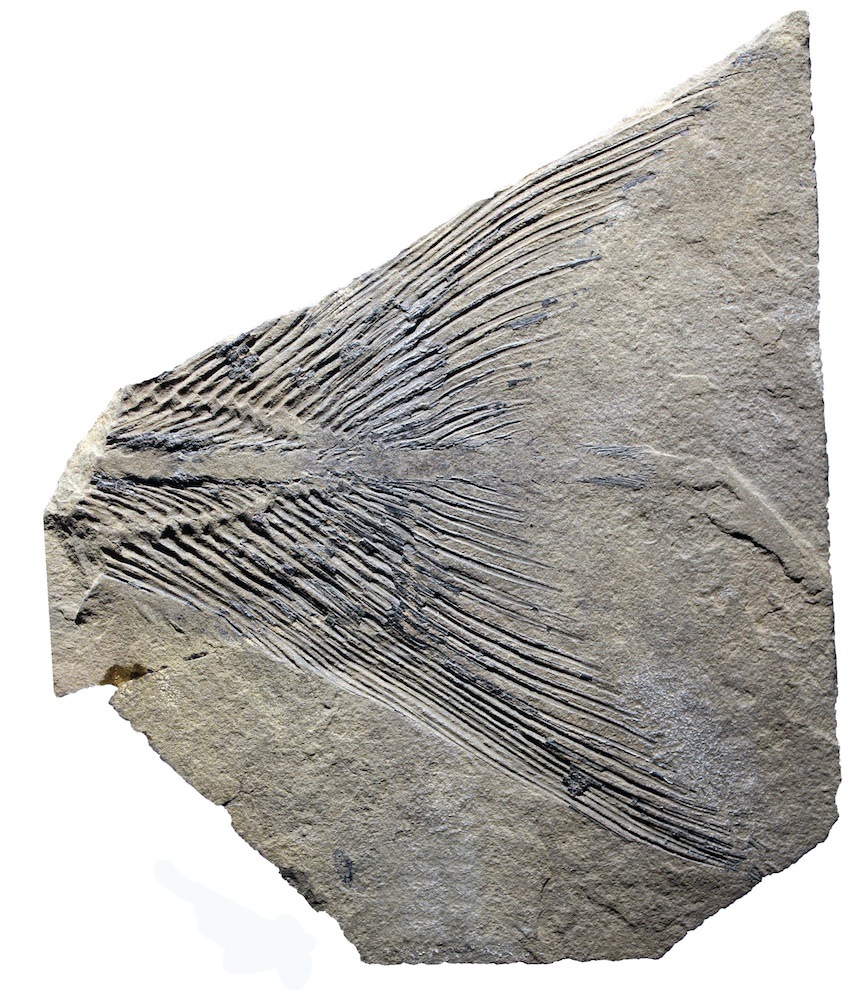
The skeleton of the stiff, forked tail of Rebellatrix that indicates its active, high-speed, predatory lifestyle. Specimen in the Royal Tyrrell Museum of Palaeontology.
Drawing of a Strange Coelacanth
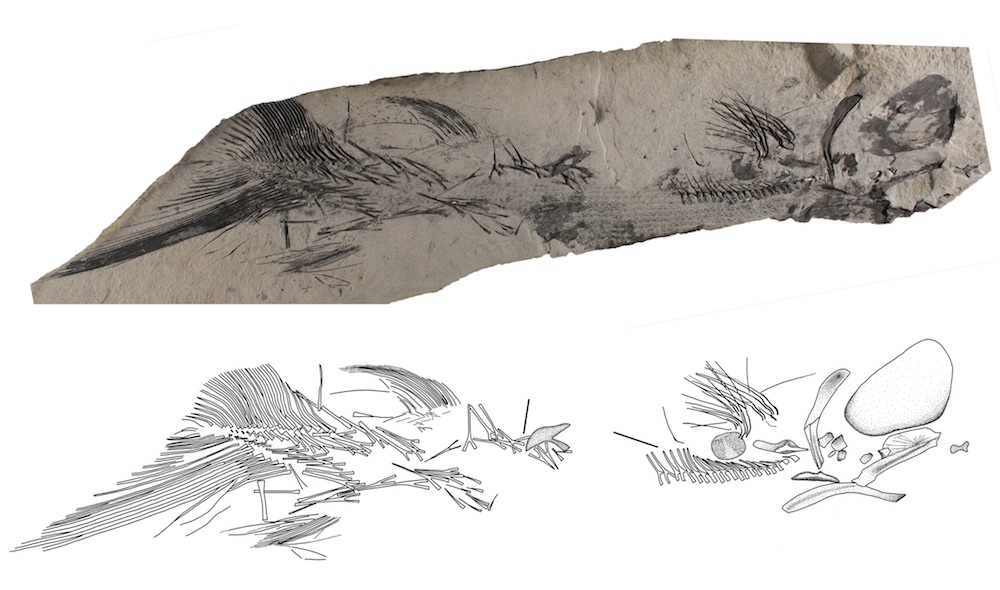
The holotype and outline drawing of Rebellatrix showing the long body with forked tail. Specimen in the Peace Region Palaeontology Research Centre (PRPRC).
Largest Coelacanth Fragment
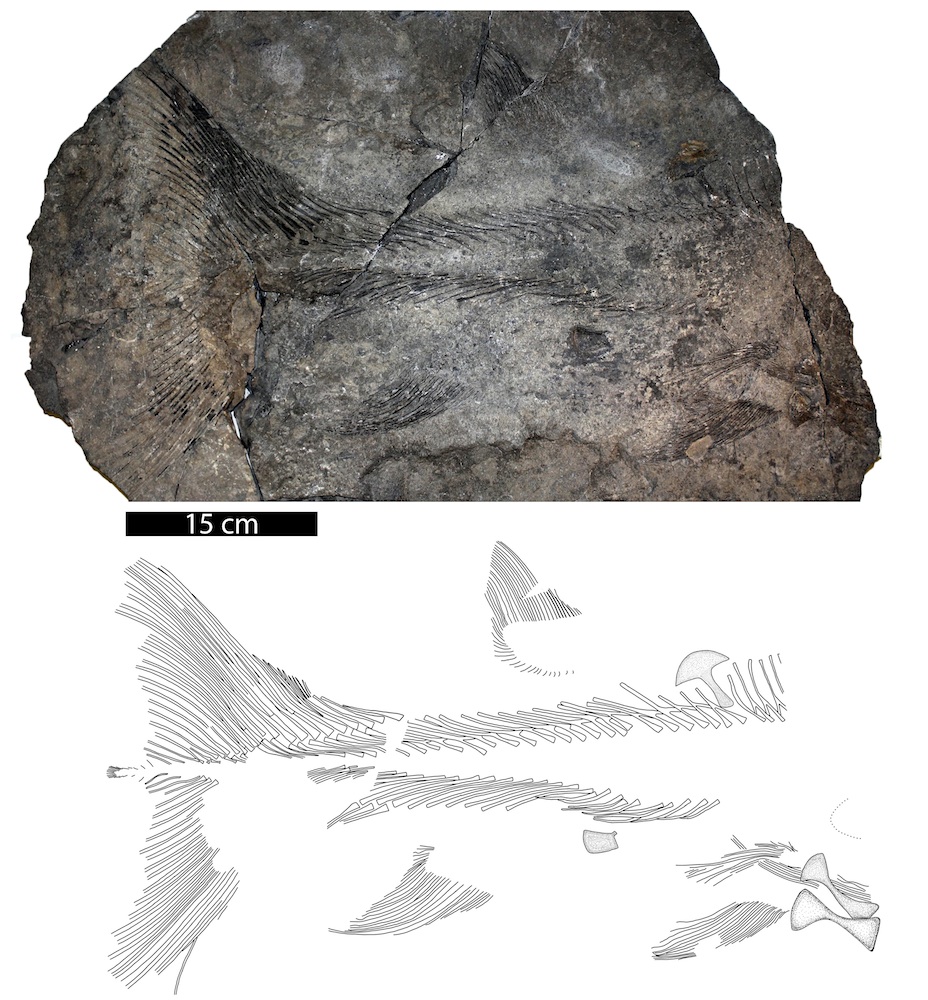
The largest specimen of Rebellatrix, though partial, shows that it grew upwards of 1 meter in length. Specimen in the PRPRC.
Reconstructed Coelacanth
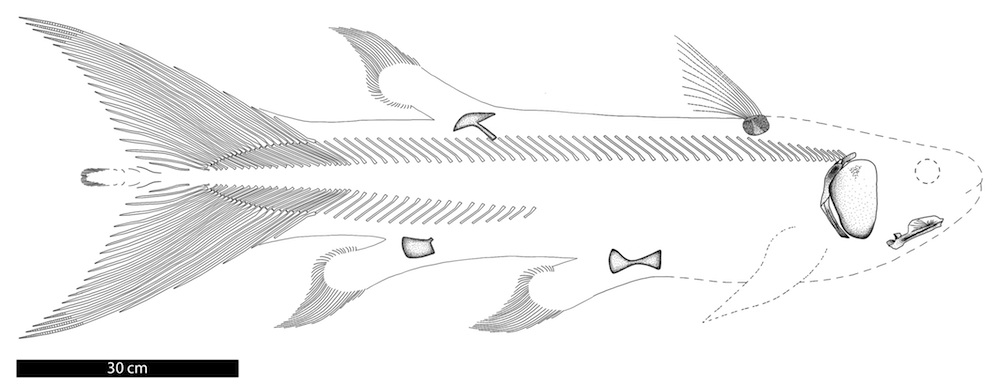
Reconstruction of the skeleton of Rebellatrix.
Coelacanth Mountain

Ganoid Ridge within Wapiti Lake Provincial Park where fossil fish like these were collected. The area was once ocean off the coast of Pangaea.
Modern Coelacanth
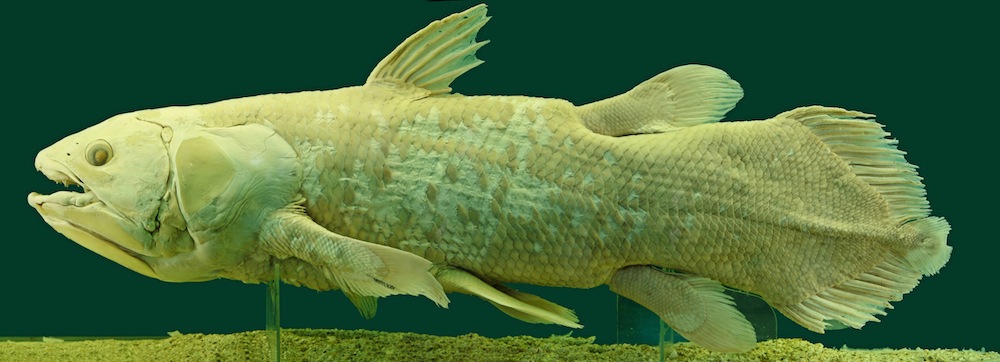
A preserved coelacanth specimen at the Natural History Museum, in Vienna, Austria. Modern coelacanths sport a paddle-like tail.
Get the world’s most fascinating discoveries delivered straight to your inbox.

Stephanie Pappas is a contributing writer for Live Science, covering topics ranging from geoscience to archaeology to the human brain and behavior. She was previously a senior writer for Live Science but is now a freelancer based in Denver, Colorado, and regularly contributes to Scientific American and The Monitor, the monthly magazine of the American Psychological Association. Stephanie received a bachelor's degree in psychology from the University of South Carolina and a graduate certificate in science communication from the University of California, Santa Cruz.
 Live Science Plus
Live Science Plus





